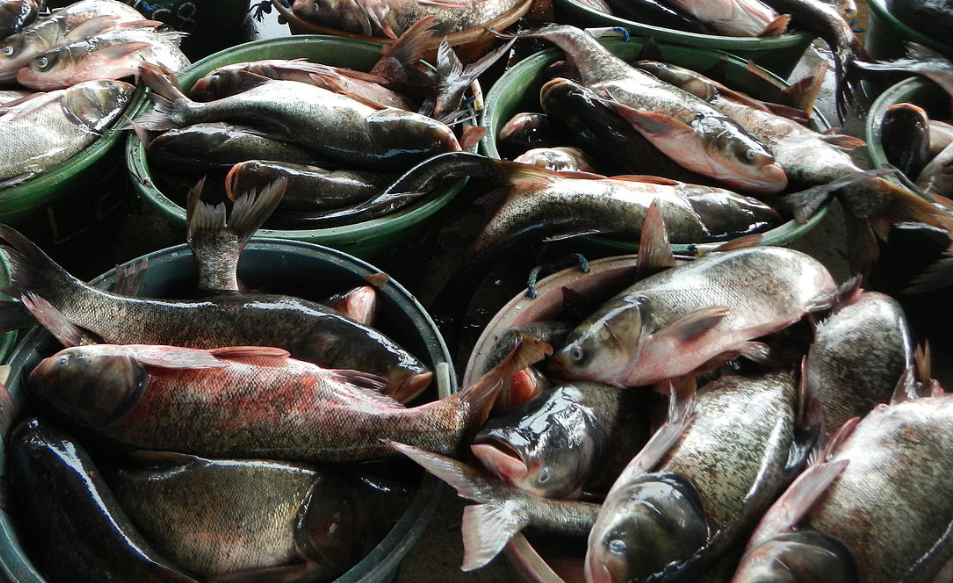


The looming threat of Asian carp entering the Great Lakes weighs heavy on anglers, recreational lakers, tourism officials and millions of people in industries that rely on the lakes for their livelihoods. And that threat is not lost on Drew Youngedyke, communications coordinator for the National Wildlife Federation at the Great Lakes Regional Center.
He traveled to Bismarck, North Dakota recently to offer up-to-date information on Asian carp developments. At The Association of Great Lakes Outdoor Writers’ annual conference, Youngedyke spelled out details about Asian carp issues and the devastation they would certainly bring the lakes – especially the Western Basin of Lake Erie, the shallowest, warmest, richest environment for the invasive species.
Of the four types of Asian carp, bighead, silver, black and grass, three remain sequestered. Only the grass carp, which eats a whole lot of vegetation, is currently found in the lakes. A number of state and federal agencies, including those from Canada, are currently addressing the grass carp issue.
Silver carp, the amazing jumpers often seen on videos, quickly dominate the waters they invade. Bighead carp consume base-level food chain treats like phytoplankton and zooplankton, cutting off the supply of food to native fish. And black carp feast on snails, slugs and mollusks, growing to an amazing 150 pounds. And all spell trouble for native species in the Great Lakes.
As Asian carp move closer and closer to the Great Lakes, wildlife officials and environmental groups are worried. A proposed project, the Brandon Road Lock and Dam, near Joliet, Illinois, is getting closer to becoming a reality, according to Youngedyke. “The electrical barriers in the Chicago-area waterways aren’t foolproof,” Youngedyke said. “Asian carp have been found on the wrong side of the barrier.”
Youngedyke said U.S. Geological Survey scientists and others have determined that Asian carp can, and will, if allowed, thrive in shallow, near-shore waters in the Great Lakes.
But hopefully, not if Brandon Road gets up-and-running – sooner rather than later.
“This is the biggest thing going right now,” he said. “It’s a lock that will feature electrical barriers, a bubble barrier, acoustic deterrents and a final flushing lock.” In October a final draft will be released. After that, congressional approval and funding. If approved, a tentative completion date to secure this critical choke-point into the Great Lakes would be 2025.
“I know seven years out, that seems like a long time, and it is. But that’s not the only thing that’s going on,” Youngedyke said. While efforts to keep the three remaining species of Asian carp out of the Great Lakes continues, the most important thing is the new lock. “This is the most crucial time to get something done,” he said. “Once the report comes out in October, our primary goal is to get Congress to approve it.”
At least 50 groups representing hunters, anglers, conservation and outdoors industry groups have signed on to support, and push the U.S. Army Corps of Engineers to move ahead with the Brandon Road project.The Great Lakes have more than 94,000 square miles of surface area and represent 20 percent of all the surface freshwater on the planet. The lakes are the core foundation of more than $40 billion – with a “b” -annually in tourism, wildlife observation, fishing, hunting and angling activities. Once the final draft is released next month, Youngedyke said he hopes those who love the Great Lakes will lobby their congressional representatives to approve funding and move forward with the project.Featured Image: Asian Carp, Photo by Ramon FVelasquez via Wikimedia

